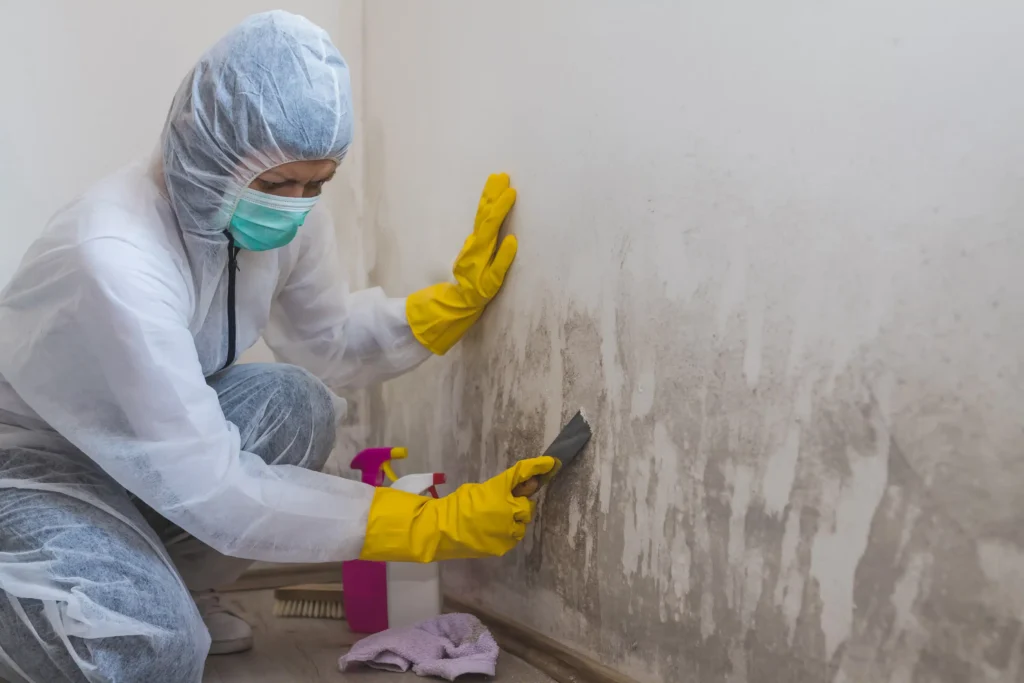Mold is a common issue that can affect any household or commercial building, leading to potential health risks and property damage. Effective mold removal is crucial for maintaining a healthy living environment and the structural integrity of buildings. We will explore the importance of professional mold removal services, the steps involved in the mold remediation process, the health implications of mold exposure, how to identify signs of mold growth, preventative measures to avoid mold, and the qualifications of mold removal experts at Restoration Pro.
Understanding Mold and Its Growth Factors
Mold is a fungus that thrives in moist environments and can grow on almost any organic substance as long as moisture and oxygen are present. Common areas where mold can proliferate include bathrooms, kitchens, basements, and areas with poor ventilation. Understanding the factors contributing to mold growth is essential for effective prevention and removal. These factors include high humidity, water leaks, condensation, and inadequate ventilation. Addressing these issues promptly can help prevent mold from becoming a larger problem.
Health Implications of Mold Exposure
Mold exposure can lead to various health issues, particularly for individuals with respiratory conditions, allergies, or weakened immune systems. Common symptoms associated with mold exposure include coughing, sneezing, eye irritation, skin rashes, and in severe cases, asthmatic attacks. Long-term exposure can exacerbate these symptoms and lead to more serious health conditions. It is crucial to address mold issues as soon as they are identified to protect the health of occupants in the affected environment.
Steps in Professional Mold Remediation
The mold remediation process involves several key steps to ensure complete removal and prevent future growth. First, the affected area must be thoroughly inspected and tested to identify the extent of the mold infestation. This is followed by containment of the area to prevent mold spores from spreading during the cleanup process. Specialized air filtration equipment is then used to capture airborne mold spores. Afterward, mold-infested materials are removed or treated, and the area is cleaned with antimicrobial and antifungal treatments. Finally, the area is dried to remove residual moisture, and all removed materials are properly disposed of.
Identifying Signs of Mold in Your Environment
Early detection of mold can significantly simplify the remediation process. Some common signs of mold include visible growth on walls, ceilings, or other surfaces, a musty odor, and increased allergy symptoms among the building’s occupants. Peeling or bubbling paint and wallpaper can also indicate moisture issues that may lead to mold growth. Regular inspections in prone areas and immediate investigation of any signs can help catch mold growth early, minimizing the need for extensive remediation efforts.
Preventative Measures to Mitigate Mold Growth
Preventing mold growth is more manageable and cost-effective than addressing an established problem. Key preventative measures include maintaining indoor humidity levels below 60%, ensuring proper ventilation, using dehumidifiers in damp areas, promptly repairing leaks, and cleaning and drying any wet areas within 24 to 48 hours to prevent mold spores from taking hold. Regular maintenance checks of HVAC systems and roof gutters can also help prevent conditions that favor mold growth.
Qualifications and Training of Mold Removal Professionals
Professional mold removal teams are trained to handle hazardous materials and are knowledgeable about the latest mold remediation techniques. Qualifications for a professional in this field typically include training and certification from recognized industry organizations such as the Institute of Inspection, Cleaning and Restoration Certification (IICRC) or the Indoor Air Quality Association (IAQA). These certifications ensure that the professionals have received comprehensive training in mold remediation strategies and adhere to industry standards.
Mold removal is essential for maintaining healthy indoor environments and protecting buildings from damage. Understanding the nature of mold, recognizing its signs, and taking preventive measures can greatly reduce the impact of mold in homes and buildings. When removal is necessary, relying on qualified professionals ensures effective remediation, safeguarding both the property’s structural integrity and its occupants’ health. Property owners can take proactive steps to manage this common yet manageable issue by staying informed about mold and its implications.

